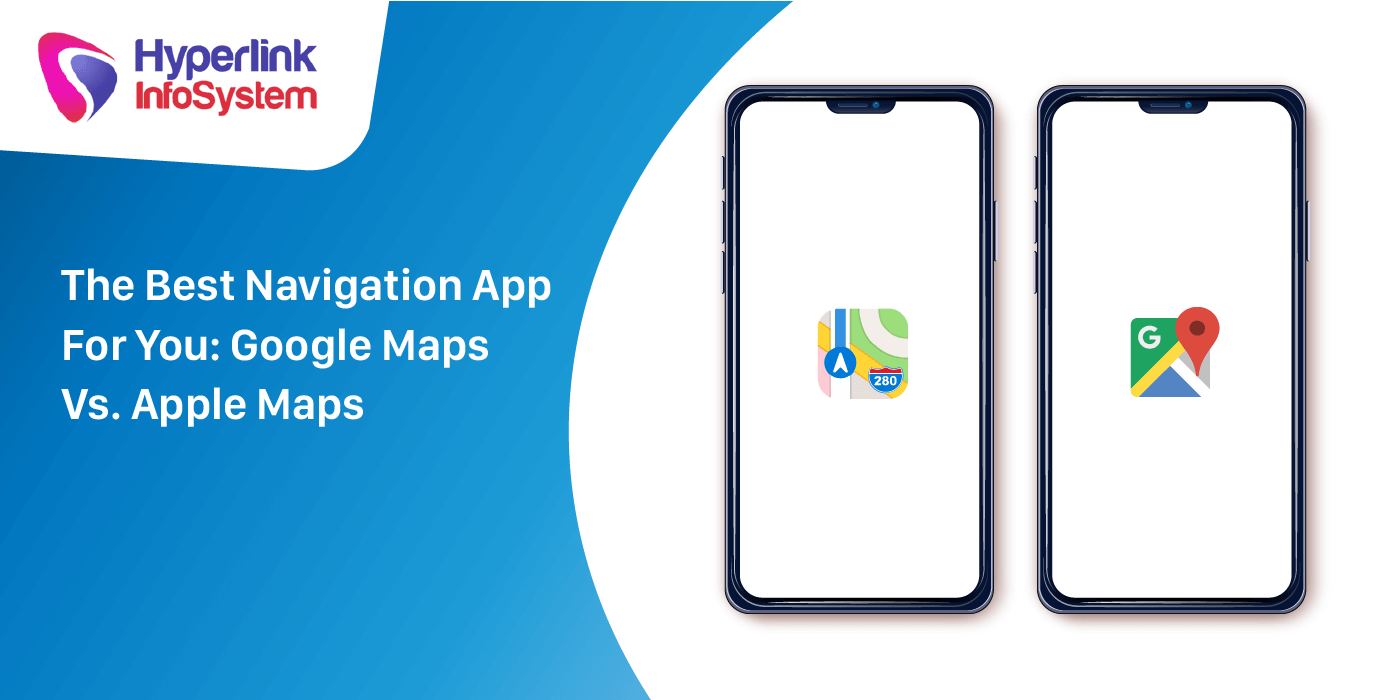Today’s era is an era where people want convenience in everything. They want things to happen at the touch of their fingers or command of their voice. All thanks to technology that humans have seen the comfort level of this extent. One such innovation is mobile app navigation. Navigation tools have changed the way we travel from one place to another. These days we don’t even need to remember the roads; we simply put the address to the navigation, and it appears.
Navigation apps like Apple Maps & Google Maps are such mobile apps by
app development companies that have transformed the way we explore places and share directions. Both these apps have the same goal, but they work differently due to some differences in navigation tools & interfaces.
If you are an Android user, Google Maps is your best bet of the two. But if you use iOS, you can use both of these. So this is mostly for iOS users who want to know which app they should opt to solve their purpose.
Let’s get started!
Platform: Google Maps vs. Apple Maps
Google Maps is a cross-platform app and can be accessible on iPadOS, iOS, Android, web browsers, and more. This app is already in-built on an android device but needs to be installed on Apple devices from the App Store.
On the other hand, Apple Maps can be utilized only on Apple devices such as Apple Watches, iPads, and iPhones. Apple Maps is already in-built on Apple devices, even Macs. You cannot find it outside an Apple product.
Speaking of which, Apple users can use Google Maps just like they use any other third-party apps. And many are doing that despite improvements to Apple Maps.
Interface: Google Maps vs. Apple Maps
Apple Maps:
The map’s performance seems a bit flatter and displays more default locations with Apple Maps, but the icons and text are smaller. Google Maps also features many default locations that don’t always match Apple Maps & the icons tend to be bigger and brighter, more attractive.
Apple Maps allows you to search for specific places with the search bar at the end of the screen. The information button in the top right launches a pop-up menu for switching between Satellite view, map, and Transit, toggling on/off traffic, and more. Look Around button is just below the information button that renders a street-level view resembling Google Street View in significant cities,
Apple also has custom icons for landmarks like the Golden Gate Bridge. And the current weather is shown at the bottom right.
Google Maps:
Google Maps looks busier and brighter due to the design relying on more contrast and color.
Google Maps also have a search box and 3 different modes: Terrain, Satellite, and Default. By clicking on the “layers” icon, you can toggle on/off information like Traffic, Bicycling, Transit, and COVID-19. You can also click on the 3D button to get a 3D view of the world.
The evident difference between the two maps is that Google Maps offers a toolbar along the bottom with tabs for Commute, Saved, Explore, Update, and Contribute. Commute guides the best route from Point A to B, whereas the Saved tab offers a list of saved locations. Moreover, Google Maps displays suggestion bubbles under the search bar, like Restaurants, Gas, and Groceries.
Apple Maps have similar features. You can access the saved locations, recent searches, frequently-visited places under My Places—the 3D option pops-up when maps are viewed in Satellite mode.
For the actual navigation screen, both are simple but with unique artistic styles. The driving mode is simple for both. By Zooming in or choosing the walking option, more locations appear on the street level for Apple. However, Google presents instant sidebar information about close locations, whereas, for Apple, you need to click to discover more details on a specific spot.
Apple’s satellite view has a higher photographic and conceptual look since it uses vector graphics, while Google’s satellite view is more realistic.
Unique Features: Google Maps vs. Apple Maps
Siri’s integration with Apple Maps is an exclusive iOS feature. Call on Siri and tell her the place you want to go, and Apple Maps will activate and send you on your way. It infuses Siri Natural Language Guidance for simpler directions.
Compared to Google Maps, Apple Maps vector graphics use slightly fewer data, convenient if you are on a restricted data plan.
Flyover Mode is one of the flashiest features for Apple Maps that lets you explore particular cities in 3D landscapes of buildings & structures. Flyover has a City Tour feature that naturally guides you to various city landmarks.
Like Apple’s Flyover Mode, Google has a Street View, an app for user-contributed panoramic views of many locations worldwide, for viewing in the main Maps app.
Another famous Google Maps feature is its offline access. This feature enables offline planning for those with restricted access to Wi-fi or data.
Apple Maps used lesser data than Google Maps; however, Google Maps compensates for the same by allowing to download whole maps for offline use.
Privacy: Google Maps vs. Apple Maps
Apple & Google are different companies with differences in data and privacy.
Apple makes a point of focusing on privacy than Google. Most of the data stays on the device and not on the cloud.
Data gathered by Maps like search terms, traffic information, navigation routing is linked with random identifiers that constantly reset. The app won’t record the history of what your search for or where you went.
Google also takes care of the user’s privacy and offers various customization and control options like an incognito mode that keeps your location and search confidential.
Conclusion
No doubt, Apple has evolved in the past few years and is doing great so far. It also offers several attractive features but is still trying to catch up to Google Maps. If you own an Apple product, Apple Maps is a better navigational tool offering visual feedback, voice, and haptic. Overall, Google Maps is doing better due to its precise maps, multi-platform availability, and maturity interface. You can hire app development company to develop an app for your business needs.

























